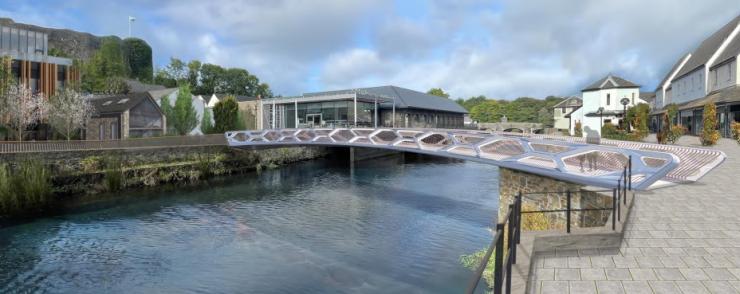Atkins is Pembrokeshire County Council’s consultant for the Haverfordwest Footbridge & Western Quayside Phase 2 project.

The plans involve demolition of an existing footbridge and the installation of the new Haverfordwest Footbridge to connect the Riverside and Western Quayside areas of the town. Public realm areas will be reconfigured and improved and the project will also include repair, renewal and refurbishment of the former Cleddau Foundry building.
Atkins’s planning, design and access statement (PDAS) said that Haverfordwest Footbridge is envisioned as a low-level sculptural solution that complements the setting and opens up new visual interaction between this part of the Haverfordwest Conservation Area and Haverfordwest Castle. A design aim is to ensure that it does not compete for attention within views of the castle.
Innovation is introduced in the engineering, said Atkins, with technical modelling having been used to enable a solution that is exceptionally lightweight. “The design presented responds to the context of Haverfordwest Castle and draws on elements and forms to inspire the geometries and angles within the new footbridge design,” it said. “This embeds the bridge proposal in the setting and gives a unique and sculptural site-specific response.”
The designadopts a hybrid structural approach whereby the loading is carried through all elements of the bridge, said Atkins. This has allowed the deck depth to be reduced, which ensures that there is no impediment to the free flow of water along the river. “The commitment to modelling and iterating has resulted in a proposal that maintains river water flow while delivering a gradient for people using the footbridge that supports inclusive and equitable accessibility,” the statement added.
The scheme has been developed in an awareness of the practicalities of deconstructing the existing footbridge and installation of the new structure, said Atkins. Detailed discussions with fabricators have informed design. Similarly, these interactions have supported the “optioneering” of materials, in the interests of delivering a low-carbon solution that offers durability, low maintenance and a desirable level of longevity.


